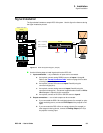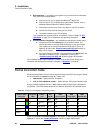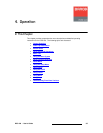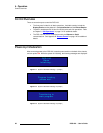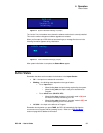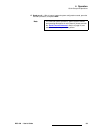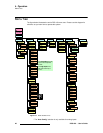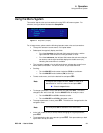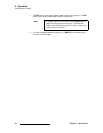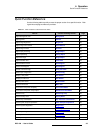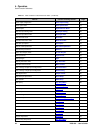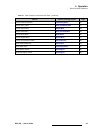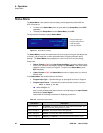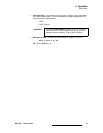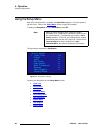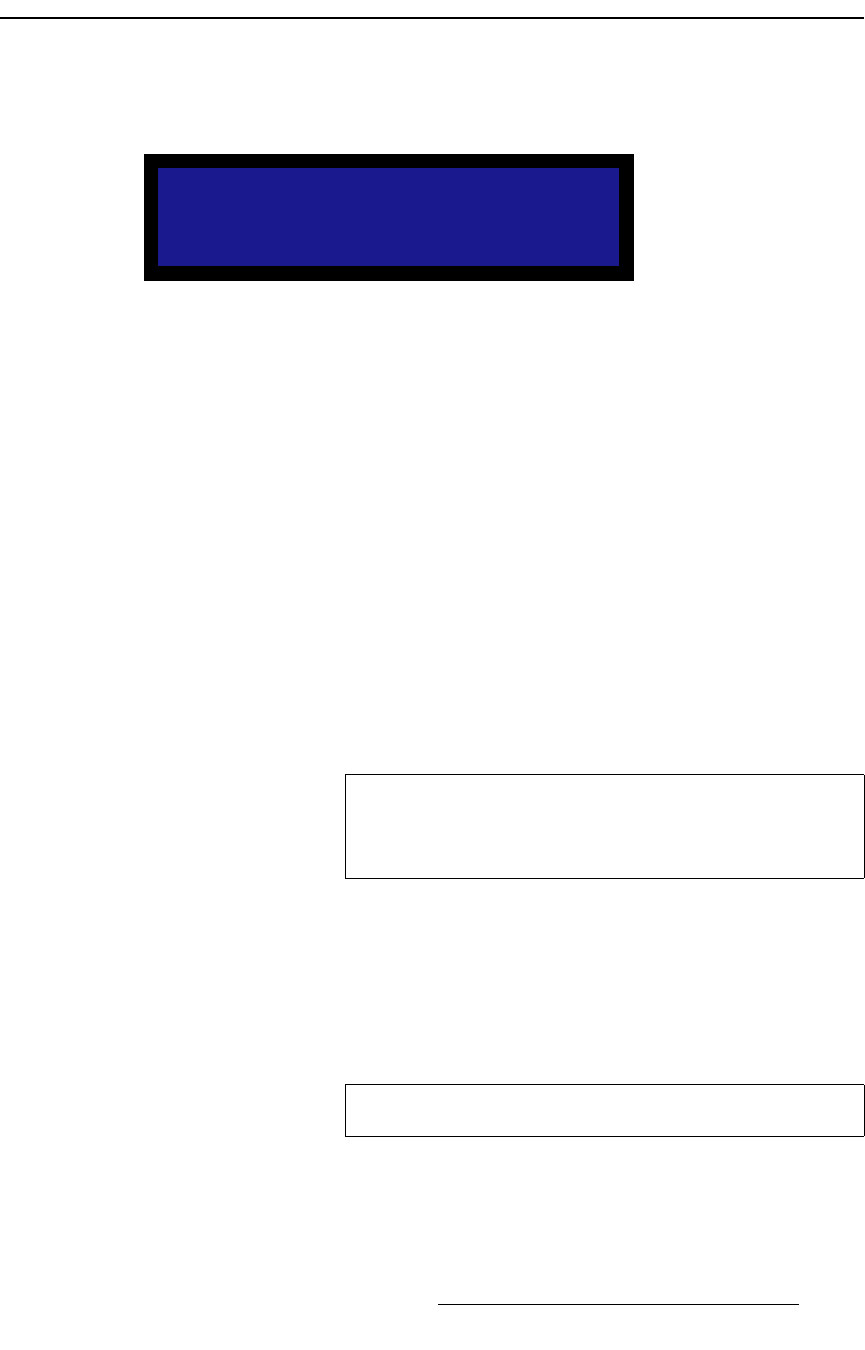
DCS-100 • User’s Guide 41
4. Operation
Using the Menu System
rëáåÖ=íÜÉ=jÉåì=póëíÉã
This section lists the rules and conventions for using DCS-100’s menu system. For
reference, the figure below illustrates the Setup Menu:
Figure 4-7. Setup Menu (sample)
For all setup menus, please note the following important menu rules and conventions:
• The top line names the current menu, in all capital letters.
• Subsequent lines typically display two fields:
~ For a listed function, the left-hand field names the function, and the
right-hand field is the function’s current parameter or value.
~ For a listed sub-menu, the left-hand field names the sub-menu that you
can access, and the right-hand field displays the double arrow (>>),
indicating that a sub-menu is available.
• The “navigation” cursor (>) in the left-hand column indicates the current line on
which action can be taken. This arrow “scrolls” as you rotate the knob.
• Scrolling:
~ Turn the ADJUST knob counter-clockwise (CCW) to scroll down.
~ Turn the ADJUST knob clockwise (CW) to scroll up.
• To enter a sub-menu, scroll to the desired line and press SEL.
• To change a parameter, scroll to the desired line and press SEL. The cursor
changes to the “edit” cursor (
#). Use the ADJUST knob to modify the value:
~ Turn the ADJUST knob CW to increase a value.
~ Turn the ADJUST knob CCW to decrease a value.
• To accept a parameter or value, press SEL. The edit cursor changes back to the
navigation cursor.
• In the “edit” mode, to exit (or cancel) without changing the original parameter,
press
ESC.
• To navigate back up the menu structure, press ESC. Each press takes you back
up the menu tree by one level.
SETUP MENU
> Trans Time 1.0
Output >>
Input >>
Note
Throughout this chapter, the term “select” is used as an
abbreviation for “scroll to a menu line and press SEL.”
S Select the Input field to...
Note
You must press SEL to activate a DCS-100 function.



